Nazi Gold and Nazi Treasure
At this point, if you, as Captain Blazkowicz had found all the gold available so far, you should be carrying eight pieces of gold. If we make the assumption that these gold bars were of standard size bullion, your total additional load would be eight times the 400 troy ounces. This works out to be a fairly hefty 220lb (or 100 kg). While we can marvel at how this additional load doesn’t seem to hamper movement, perhaps something more important to think about is why is there this gold and treasure (we found a chalice) here in the first place. This article discusses why these exist in the game in the first place.
The first thing we can say is that RtCW has hidden gold and treasure because as a homage to Wolfenstein 3D, such things were necessary. Beyond the challenge of finding these secret areas, there was some precedent to idea of where there are Nazis, there might be treasure of gold (but not in a happy leprechaun way!)
From times of the first warrior kings, the king would subject his people to taxes to raise money to pay for his accommodations and lifestyle and, to fight his wars. The Nazis were in a similar situation as money was needed to buy from neutral counties. Their plan was to source gold from two sources: from within the country by taking it from those that “didn’t deserve it”; from outside the country by appropriating it from occupied countries treasuries. Let’s look at each in more detail.
Nazi Treasure within Germany
When I say “those that didn’t deserve it”, I’m referring to the Jewish communities within Germany but even before a community was specifically targeted, there was an attempt to define art into desirable and not desirable. Hitler, as a failed artist, considered himself an art expert and defined a Nazi ideal of art work in Mein Kampf. This ideal split along the lines of classical art (generally pre 20th century) and modern art (broadly modern styles such as Cubism etc). By 1937, offending artwork was removed from German art galleries and displayed in Munich to allow public scorn. After receiving 2 million visitors, the ploy didn’t seem to be working. After trashing such undesirable art, they had a hard time selling it so they instigated a public art burning similar to the previous book burning. This horrified enough outside Germany that more of this art found buyers from outside the country.
Once a country embarks on a process of public art confiscating, it is soon likely to switch its attention to its private collections. The Nazis had a public policy of harassing their undesirable races and the Jews, with prominent rich families, became the ideal group to exploit. While the Jewish oppression began as soon as Hitler gained control in 1933, it was only on February 21st 1939 when an official plan to relieve them of all silver and gold began. This silver and gold was melted down into ingots and sent to the Berlin banks to use as collateral to buy military equipment and food from neutral countries.
While I guess this was slightly tainted gold, it gets quite a bit worse. The Nazis wanted to much more than dispossess the Jews and others of their wealth: what they ultimately wanted to do was remove them from the world. This was done via the plans of removing the ‘undesirables’ and taking them to concentration camps to be murdered by gassing and other less desirable ways – this of course being the Holocaust. Originally, the Nazis were murdering and burying the bodies but after they realized that these mass graves were fowling the water supply, they decided to dig up the bodies and burn them. You would have to wonder who has the bright idea but until that point, the bodies were being buried as-is but on September 26th 1942, someone had the idea that the bodies (both living and dead) could be striped of wedding rings and even gold fillings. These too were melted down and turned into ingots. So, as this game is set in March 1943, it’s possible that this could be some of that gold….
A horrible thought. Let’s try and move on.
Nazi Gold Outside Germany
Moving onto slightly better sources of gold bars, we should also look outside of Germany. Germany occupied many countries within Europe and while the Nazis seemed to get some sort of pleasure in occupying other countries, they were quick to get to the country’s central banks and strip them of their gold. This happened in enough places that an organization named the Einsatzstab Reichsleiter Rosenberg für die Besetzten Gebiete (The Reichsleiter Rosenberg Institute for the Occupied Territories). This rather long named organization we can fortunately abbreviate to ERR. They originally had a mission to collect Jewish and Freemasonic books for German study but in 1940, its aims were changed to collection of any Jewish artifacts of value this seemed to mostly be artwork as that was difficult to hide but plenty of gold was included with that.
Why Gold in Wolfenstein?
So, we have already established that finding gold and treasure is a requirement in any Wolfenstein homage, we still have to ask why we are finding any gold at all. After all, there seems to be an efficient transfer in place from those that have it to those that don’t. What we need to add to the mix is why is there any around outside of this process? To explain this, we have to bring Hermann Göring into the story.
Of all the Nazis in Hitler’s inner circle, perhaps Hermann Göring was the only one that provided any military experience. He flew aircraft during the First World War and won a coveted Pour le Mérite medal after a claimed 22 aerial victories. After the war, he joined the Nazi Party and took part in the failed Beer Hall Putsch. He avoided arrest and was smuggled out of Germany. When the Nazi Party gained control of the German government, Göring was given a ministerial post and created the Prussian police force known as the Gestapo. When Hitler decided to ramp up the Nazi military machine, Göring was given the head post and this allowed him to take the Field Marshal position when it was ‘made available’. When the Second World War started, Göring was able to score a number of quick victories in Poland and France so Hitler promoted him to a special rank that made him the top ranked soldier in the German military. He also became Hitler’s official successor. After military losses in The Battle of Britain, Africa and the eastern front, he lost his standing with Hitler but continued to hold his military ranking. As the war ended, he moved to the western front to avoid surrendering to the Russians but that didn’t save his life as he was found guilty of war crimes at Nuremberg. He avoided being hanged by committing suicide by cyanide capsule smuggled in on the night before his sentence was to be carried out.
Great, you say but what has this to do with anything? Well, Göring had an upper class upbringing and had always enjoyed the finer things in life. When the ERR was created for the collection of Jewish books, it was Göring that expanded its scope to collect quite a bit more. Not only that but he was a frequent visitor to Paris to oversee activities and took the opportunity to skim off his choice of pieces of art. While Göring became the poster child of Nazi plunder, all the other top leaders were doing it to a lesser degree. It is from this action plus the fact that everyone had to hide their stash from everyone else that means that where ever we find Nazi soldiers, we will likely find hidden treasure.
We have so far found one treasure (a chalice) and we will find plenty more later but this still isn’t the gold we are finding. The gold was certainly coming in to Germany from other countries and less savory places and it was also being spent to pay the bills but nearing the end of the war, the German issue wasn’t money to pay for military hardware but their inability to convert this money into hardware. So, at the very end, the gold was moved out of the Reichsbank in Berlin and moved to basically anywhere else. A large piece of that “anywhere else” became the disused mine in Merkers though there were many other theories of where other gold could have gone including leaving the country entirely and heading to places such as South America. Could the gold have been stored in other places such as the locations we are playing in? Well it is possible.
But in Egypt?
This is the weak link in the story. While we could believe that gold bars are being hidden in Germany, can we really believe that someone would “steal” (steal being a relative term here) gold and take it to Africa? I don’t think we can really make a case for that. The next option is that it was taken as part of the expedition to be used to buy favor and anything less locally. This doesn’t seem likely either as all the documentation we have found so far indicates that the Germans aren’t exactly welcome visitors. Certainly, there have been some local mercenaries that might be paid for but this seems like far too much money for that. There doesn’t seem to be large future payments either – at least not as far as we can tell. So, we are left with the only other option which is that this is Nazi plunder. We have to believe that this gold had been found in the village or in the archaeological dig and has been melted down. It is being hidden so this isn’t Nazi policy and is being done by all manner of people from possibly the NCO level to the Major. I guess it’s possible though we have yet to find any smelters capable of melting gold.
Further Reading
As usual, I have very excluded many details from these stories.
More on the Nazi Plunder can be found here.
The full story of Merkers gold hoard can be found here.
More details about Hermann Göring can be found here.
A timeline of the Holocaust can be found here.
Coming Next
Next we are going back to the game. The next level is the one that I think is the best looking one in the Mission Zero series. We are going to enter the archaeological dig!
The Introduction Film
So, we are finally there, ready to kick some Nazi’s butt! Well not quite, we have some mini films to watch first to set the scene. I intend to write my review as if this is the first time that I have played the game. I want to look at what gets presented and when. There will be times when I’ll jump out of this mode but that will most likely be to mention something that either won’t get explained later. As we learn new plot elements, I’ll step aside from the game and try to give some sort of summary of the real world item, place or person that this either is or, more likely, what it is similar to. If nothing comes up as obvious, I will attempt to speculate, though I will always say when I am speculating.
So, the game starts up, the obligatory credits roll and then we watch the intro film. As it has been posted multiple times on YouTube, I’ll post what seems to be the most popular copy below.
I’ll also provide the actual script below:
943 AD
The prolog starts on a battle field of epic carnage. A hooded man (monk?) with a firebrand staff, treks thought the rain to a ruin. One of the knights sees him and runs to attack. The man repels the attack with a magic discharge from his staff. The fallen knight’s helmet falls off and rolls over to another warrior. The other stops what he is doing, picks up a head (anyone’s head!), and throws it to the hooded man. They talk…
Hooded Man: Heinrich, your reign of terror must end.
Heinrich: You fool! You know as well as I that I cannot be destroyed!
Heinrich advances on the hooded man with his sword. He swings but is met with the magic of the other’s staff. Neither one yield and they are both repelled by the power. The hooded man crawls over to a crystal (the light we assumed that was on his staff) meanwhile Heinrich picks up his sword and walks over to deliver a killing blow. As Heinrich is about to strike, the hooded man draws a sigil in the stone and speaks to Heinrich.
Hooded Man: A prison then…
Light strikes Heinrich and sweeps him over to a raised platform. With the aid of the shinning crystal, the hooded man drops Heinrich into a seemingly bottom-less pit and rocks seal him in. The hooded man finally speaks.
Hooded Man: May the fates hold off the coming of the storm.
The hooded man turns and walks away. The building turns to rubble as he leaves.
1943 AD (that’s right exactly 1,000 years later)
Men are digging around large stones. While we don’t see any faces, we can assume that the man about to speak has just discovered the imprisoning sigil of Heinrich. He says….
“Return to Castle Wolfenstein immediately. Notify Herr Himmler – we’ve found him!”
We can only see the man’s arm but from that we know that he is a German officer.
So what do we learn?
We thought we were going to play an escape from Castle Wolfenstein like how the original Wolfenstein 3D but we instead watch a film about supernatural events of a thousand years earlier. Clearly something is going to happen now that the sigil has been re-discovered but it is unclear how that will affect the game. A quick search on Heinrich turns up the following:-
Henry I the Fowler (German: Heinrich der Finkler or Heinrich der Vogler; Latin: Henricius Auceps) (876 – 2 July 936) was the Duke of Saxony from 912 and German king from 919 until his death. First of the Ottonian Dynasty of German kings and emperors, he is generally considered to be the founder and first king of the medieval German state, known until then as East Francia. An avid hunter, he obtained the epithet “the Fowler” because he was allegedly fixing his birding nets when messengers arrived to inform him that he was to be king.
On the same Wikipedia page we find the following, more ominous reference:-
There are indications that Heinrich Himmler saw himself as the reincarnation of the first king of Germany. The Nazism ideology referred to Henry as a founding father of the German nation, fighting both the Latin Western Franks and the Slavic tribes of the East, thereby a precursor of the German Drang nach Osten (the attack on the countries east of Germany).
The above picture shows Heinrich Himmler laying a wreath on Heinrich I’s tomb.
Clearly, there is something to the events of the tenth century and those of the twentieth. So, from the very beginning, there is a mixing of truth with fiction. From what information is known about Henry the Fowler (Heinrich), he was more of a benevolent ruler (as much as 10th century rulers could be) rather than a warlord. He gained something of a legendary status within Germany in much the same way, and for the same reasons as King Arthur and Charlemagne. In battle, he successfully led a force against the invading Magyars (Hungarians) and in peace he united the Germany duchies into a loose confederation that could be considered an early Germany.
Where the intro video deviates from history is his portrayal as some sort of black magician warrior that has some level of immortality (“You know as well as I that I cannot be destroyed!”) and secondly, by 943 AD he was already dead. I think it was important that the two events span 1,000 years but also, the rediscovery had to be a middle war year. I think the 1,000 year span was important because it reinforces the other 1,000 year span mentioned at the time, the 1,000 year Third Reich – a 1,007 year span doesn’t have the same ring to it!
We don’t get any real sense of where the film is set but we get glimpses of an almost Stonehenge-like circle structure that the action takes place in. As the monk walks away, it all seems to collapse behind him so I guess it makes sense in the limited 1943 part of the film, we don’t see anything of this building.
Going back to real history, Heinrich died and was buried in Quedlinburg Abbey which is in the north-western foothills of the Harz Mountain range. I’ve included a picture below. If you were to replace the abbey belfries with a single bergfried tower, you would have another Castle Wolfenstein-like castle as envisioned by Silas Warner.
I mention the Harz Mountains because we will be visiting these mountains soon enough. This is a map of the area. Quedlinburg is just below the map’s key.
Now if we want to fit it all together, we can certainly try. How about Heinrich dying in 936 as historically stated but then rose from the dead by dark magic. He, with his undead army, plunders the land causing all sorts of damage until imprisoned by the hooded man. So who is this hooded man? In the game, we don’t find out but the Wolfenstein Wiki states that he is Simon the Wanderer – an ex-Benedictine monk that left the order. They don’t state their sources but as no one has contradicted them, that’s good enough for me.
We can also make an assumption that these soldiers are somewhere near Castle Wolfenstein as the voice implies that his journey back to Castle Wolfenstein will be a short one.
Technical Details
There are not too many details of how this film was made. It was made by a company named Blur Studio and they are still in business creating animations. The Quake III engine was not used to create this film (unlike the rest in the game). This link gives some details of the film making process including the fact that the film was made to be displayed on cinema screens. The idea of multiple passes to create the blurred background can be handled almost automatically these days. For reasons unexplained, Blur Studio is not included in the game credits.
Coming Next
Onto the actual game! Well actually no. I decided to go through the prequel levels set in Egypt that were added to the PS2/Xbox versions of the game. And that means, of course, that we have another film to watch. I will also talk about how you can play the PS2 version of the game if you want to follow along.
A Quick Summary
At this point I want to summarize where we are in the tropes and mythos of Castle Wolfenstein. Silas Warner introduced the following items:
- The player is captured and taken to Castle Wolfenstein – a place with a very bad reputation.
- The player must escape but not before finding plans about some big mission being planned in the future.
- While the player can escape with all guns blazing, they would be advised to use stealth whenever possible.
- The castle is filled with both enlisted soldiers and the dreaded SS. The SS seem to need a lot more fire power to be taken down.
Id Software expanded the mythos further in Wolfenstein 3D:
- The captured soldier now has a name BJ Blazkowicz, an American of Polish ancestry.
- The Nazis have expanded medical science by creating a serum that can bring the dead back to life in a zombie-like state.
- Further to this, they have adapted these bodies to support attached weapons.
- They have also created a large supply of chemical weapons and are in the process of actually using them against the Allies.
- The castle is also filled with treasure which we assume has been stolen from their oppressed. The player might as well take as much of it as possible as he escape.
- The castle also has plates of turkey diners waiting to be eaten!
- Certain characters are stronger than all the others (the bosses).
- Large, almost tank-like body armor is ready to be used by the Nazis.
- Events can take place in other castles/fortresses while still being a Wolfenstein game.
Id Software further expanded the mythos with Spear of Destiny:
- The Nazi leadership is prepared to go to any length to win, including occult means.
- Legends of the past can be used in current Nazi plans.
- The Nazis are further advanced than first thought in nuclear weaponry.
- The Nazis have a secret base in Norway devoted to nuclear research.
- Submarine pens are cool places.
- Through occult means, Hitler has been shown the future and has almost ready to deploy computer technology, powerful lasers and killer satellites.
- They also have advanced robotics with either computer or organic control.
Genesis of Return to Castle Wolfenstein (RtCW)
RtCW wasn’t released until November 2001 which gives us a lot of time to fill in. Id Software (or John Carmack really), worked out the issues with the floors and ceilings producing an architecture that looked more realistic. They incorporated it into their next smash hit Doom (and Doom II). Doom was described as 2.5D rather than 3D as the up and down dimension was still not fully implemented. That was fixed in their next game engine and game named Quake. The Quake engine was further refined and released in their game Quake II. Quake II was their first that supported a 3D graphics card but a non-3D display option was possible. The 3D engine was further refined and now exclusively needed a 3D graphics card to run. The third Quake game, Quake III Arena used this new game engine and now supported curved surfaces, 32 bit color and shaders. This game engine was one of the most popular and was licensed to other companies and produced other popular games such as Soldier of Fortune II, American McGee’s Alice and of course, Return to Castle Wolfenstein.
There isn’t that much information about the creation of RtCW but we do have some facts: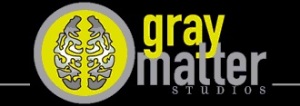
- The actual game creation was undertaken by a company called Gray Matter Studios. The company had been newly formed from Xatrix Entertainment Inc that had previously created games such as the Redneck Rampage series. They were partially owned by Activision.
- They had a prior business arrangement with id Software, having produced Quake II: The Reckoning, an expansion mission for Quake II.
- Id Software took an executive producer position with the game development. They certainly provided help with the Quake III game engine but it isn’t clear how much direction they provided with the actual game content.
- There was some competition between Gray Matter Studios and Raven Software over developing the game. Gray Matter favored a Wolfenstein 3D reprisal while Raven Software wanted to try something different. Gray Matter was chosen by id Software for the game. Raven Software got their chance to express their ideas in the later Wolfenstein game.
Games had changed in the eight years between Wolfenstein 3D and RtCW. By the end of the 1990’s, it was expected that a first person shooter game have a plot, support certain primary objectives with perhaps secondary objectives introduced as needed and have a reason for every action within the game. What had dropped away from these games were the concept of a score, the collecting of objects (treasures?) with no apparent usage and except when the plot required it, specific kill counts and timed levels. Secret areas were still being used but secret levels were not used unless they could be worked in as optional secondary missions.
The RtCW team was sensitive to the game’s heritage and they certainly took a look at what makes a Wolfenstein game. The exact parts that were chosen from such a list, we will discover as we work through the game.
Further Reading
Two interviews with Drew Markham of Gray Matter are available here and here. Also an interview with Todd Hollenshead is here. This last one is from Nvidia so the emphasis is on the graphics engine rather than the game. A list of all the game credits can be found in this link.
Coming Next
Finally, we are ready to start the game! The next entry will be about the starting ‘film’ created by Blur Studio that runs before the game begins properly.



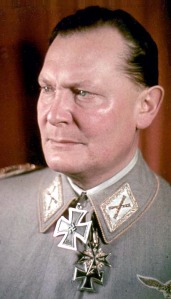
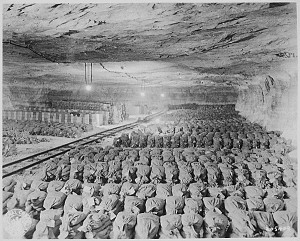
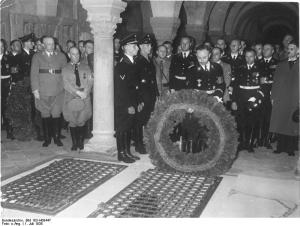
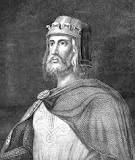
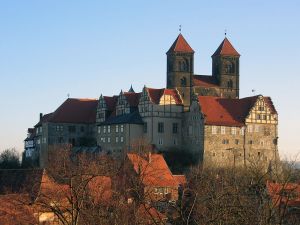
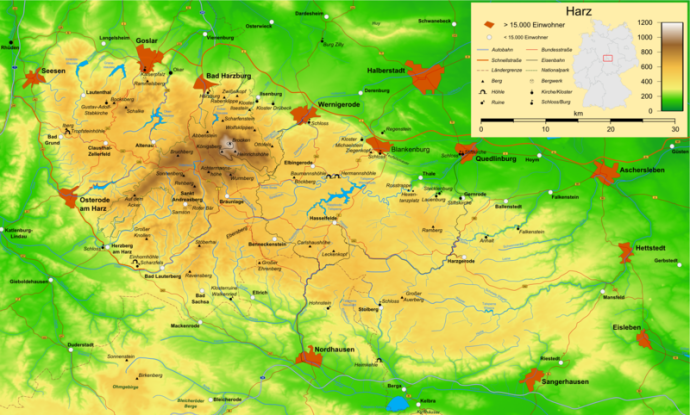
No hay comentarios:
Publicar un comentario
Comentate algo, no seas amarrrrgo... y si comentás, no nos amargués :D